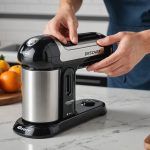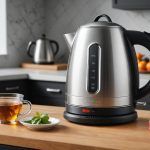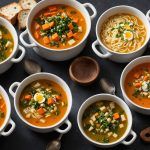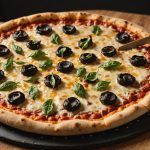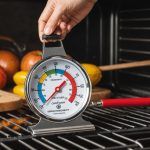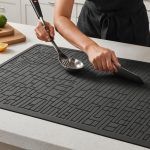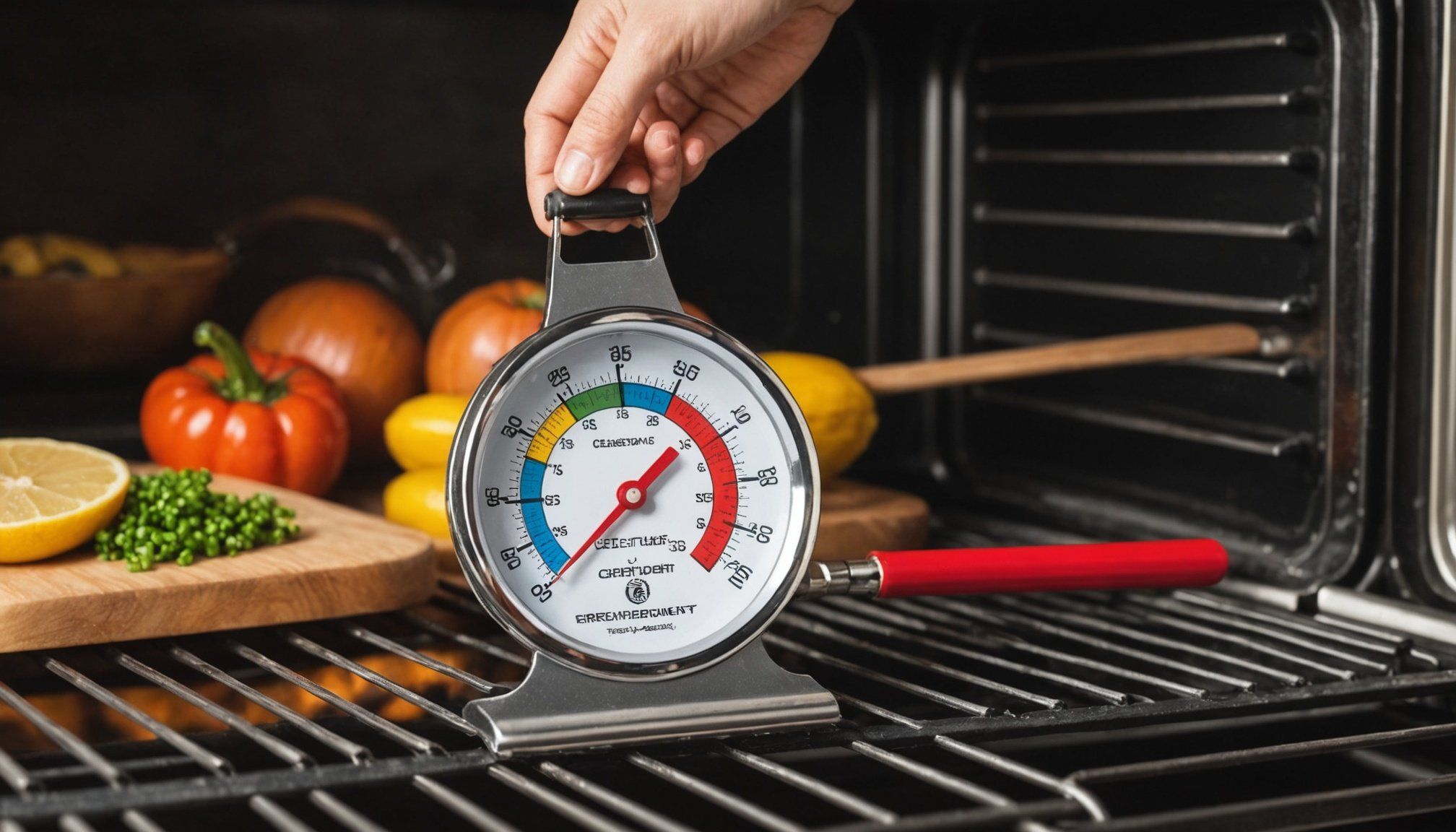Importance of Accurate Cooking Temperature
Cooking with precise oven temperature is pivotal not only for enhanced flavours but also for the success of culinary experiments. Whether you’re baking a delicate soufflé or roasting a chicken to perfection, understanding the role of temperature ensures that dishes are cooked exactly as intended. Inaccuracies can lead to undercooked centers or overly burnt edges, frustrating cooks aiming for excellence.
A frequent issue among home cooks is facing inconsistent cooking precision due to unreliable oven temperatures. This often results in uneven baking, where one side is well-cooked while the other remains underdone. The avoidance of such common cooking problems is vital for anyone keen on achieving mastery in the kitchen.
To combat these challenges, employing an oven thermometer can be game-changing. Investing in this tool aids in maintaining culinary success, ensuring that the actual temperature aligns with your cooking expectations. Oven thermometers are indispensable, acting as a constant check, enabling you to make necessary adjustments for consistent results. These small yet powerful devices play a critical role, especially when your goal is to deliver impeccable dishes time and time again.
Overview of Essential Oven Thermometers
In the world of reliable cooking tools, understanding the different types of oven thermometers is crucial. Primarily, oven thermometers are divided into analog and digital categories.
Also to see : Master the art of pizza: key features of a pizza stone for crispy crusts in your home oven
Analog vs. Digital Thermometers
Analog oven thermometers typically feature a straightforward dial and are acclaimed for their simplicity and no-need-for-battery operation. They offer stability and have long been a kitchen staple. Meanwhile, digital thermometers provide greater precision, displaying exact temperatures, often with features like temperature alarms and timers. These are ideal for those seeking enhanced control over their cooking.
Features of Reliable Thermometers
When selecting an oven thermometer, it’s essential to consider attributes that contribute to its reliability. Heat resistance, readability, and ease of calibration are essential elements. Both analog and digital thermometers should offer these features to ensure your cooking results are consistent.
Notable Brands
Leading brands like Taylor, CDN, and ThermoPro have carved a niche in this market by offering dependable products that cater to varying needs. Each brand provides options, ranging from basic models to advanced digital thermometers with myriad features, ensuring that there’s a suitable choice for every culinary enthusiast.
Tips for Using Oven Thermometers Effectively
Oven thermometers can significantly improve your cooking precision and ensure culinary success, but their effectiveness depends on proper usage. Here’s how to maximise their benefits.
Correct Placement
For accurate readings, position your oven thermometer in the centre of the oven. This placement avoids proximity to heating elements, which can skew results. Ensure it’s visible through the oven door for easy monitoring without opening it frequently.
Maintenance and Calibration
Regular maintenance is key to its reliability. Clean it periodically, especially if you notice residue build-up. Calibration checks are crucial; boiling water tests can verify accuracy—boiling is 100°C (212°F). If discrepancies arise, recalibrate or consider replacement.
Versatile Use in Cooking
Understanding various cooking scenarios heightens the effectiveness of your thermometer. When roasting, position near the centre for whole dishes, while baking pastries or cookies, place it alongside the bakeware’s centre point.
Calibration for Consistency
Consistent calibration is vital for maintaining uniform oven temperature accuracy. Make it a practice to check and recalibrate your oven thermometer periodically. This ensures that results remain consistent and helps troubleshoot performance issues promptly.
Troubleshooting Common Temperature Issues
Navigating the world of cooking precision can be challenging when confronted with temperature troubleshooting in ovens. Identifying temperature fluctuations is fundamental. One common symptom is unevenly cooked dishes; some parts might cook while others don’t. Such cooking problems often stem from faulty heating elements or suboptimal oven temperature accuracy.
To resolve these issues, start by examining the oven’s performance. Use an oven thermometer to verify its internal temperature. If disparities between the thermostat and the thermometer arise, the oven might require recalibration. Calibration offers a remedy for temperature discrepancy, ensuring cooking culinary success by maintaining precise control.
Addressing oven inconsistencies involves more than just recalibration. Ensuring that an oven preheats fully is crucial, as starting to cook too soon can exacerbate temperature problems. Regular maintenance also plays a role in preserving stability; clean heating elements and verify door seals to prevent heat escape.
With an emphasis on oven calibration, users can achieve optimal baking and roasting results. Employing these strategies can transform an undependable oven into a reliable cooking tool, facilitating consistent culinary achievements.
Top Recommendations for Oven Thermometers
Choosing the best oven thermometers is essential for precise cooking. In this section, we compare digital, analog, and infrared options.
Digital Oven Thermometers
Digital oven thermometers are highly regarded for their precision. They offer clear and immediate readings, often featuring additional functionalities like alarms and timers. A prominent model is the ThermoPro TP-16, valued for its user-friendly interface and accuracy.
Analog Oven Thermometers
Analog thermometers are appreciated for their simplicity and reliability. These tools provide stable readings without the need for batteries. For example, the Taylor Classic Series is renowned for its durability and ease of use, making it a staple in many kitchens.
Infrared Oven Thermometers
Infrared thermometers offer the convenience of non-contact temperature readings. They are excellent for quickly checking surface temperatures. The Etekcity Lasergrip 774 stands out, providing quick and accurate measurements, although it lacks the capability to measure ambient oven temperatures.
Each category has its pros and cons. Digital types offer precision, analog types boast durability, and infrared types provide ease of use and speed. Prices range from $10 to $50, and these thermometers are available through online retailers or kitchen appliance stores.
Selecting the Right Oven Thermometer
Choosing an oven thermometer is a critical step toward achieving culinary success. When evaluating options, consider your specific cooking habits and needs. Does your culinary style lean towards precise baking, where slight temperature deviations can lead to a soufflé mishap? If so, a digital thermometer might suit you, given its precision in providing immediate temperature readings.
Calibration is also paramount. Regular accuracy checks can prevent cooking problems caused by fluctuating temperatures. Select a thermometer that allows easy recalibration or verification against standard measures, such as boiling water tests.
In addition, the buying guide should address the thermometer’s ease of use and compatibility with your oven type. Compact models might fit better in smaller ovens, while larger displays are beneficial for quick readability in bustling kitchens. Features like temperature alarms can enhance cooking precision, alerting you to adjustments when necessary.
Lastly, explore varied choices from trusted brands renowned for oven temperature accuracy. This ensures reliability and longevity, underscoring the importance of a well-chosen thermometer in enhancing your culinary endeavors. A suited thermometer becomes an indispensable companion in achieving impeccably cooked dishes.

